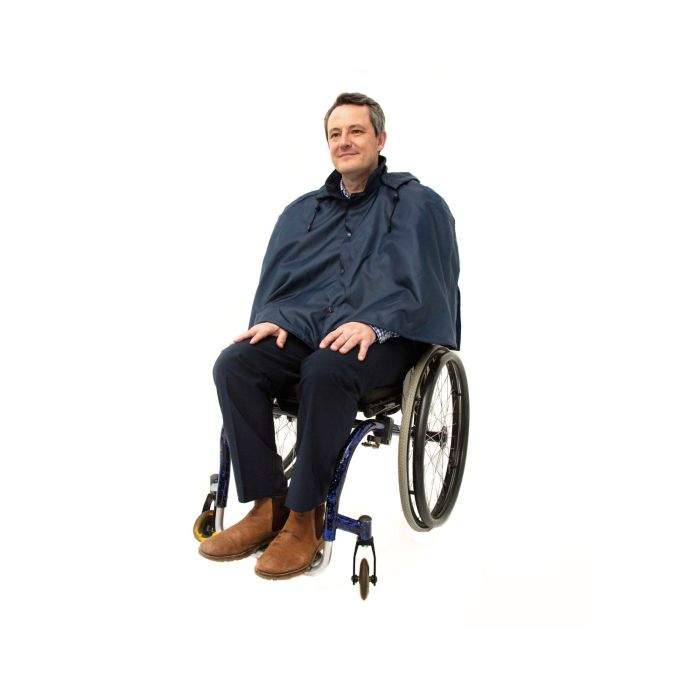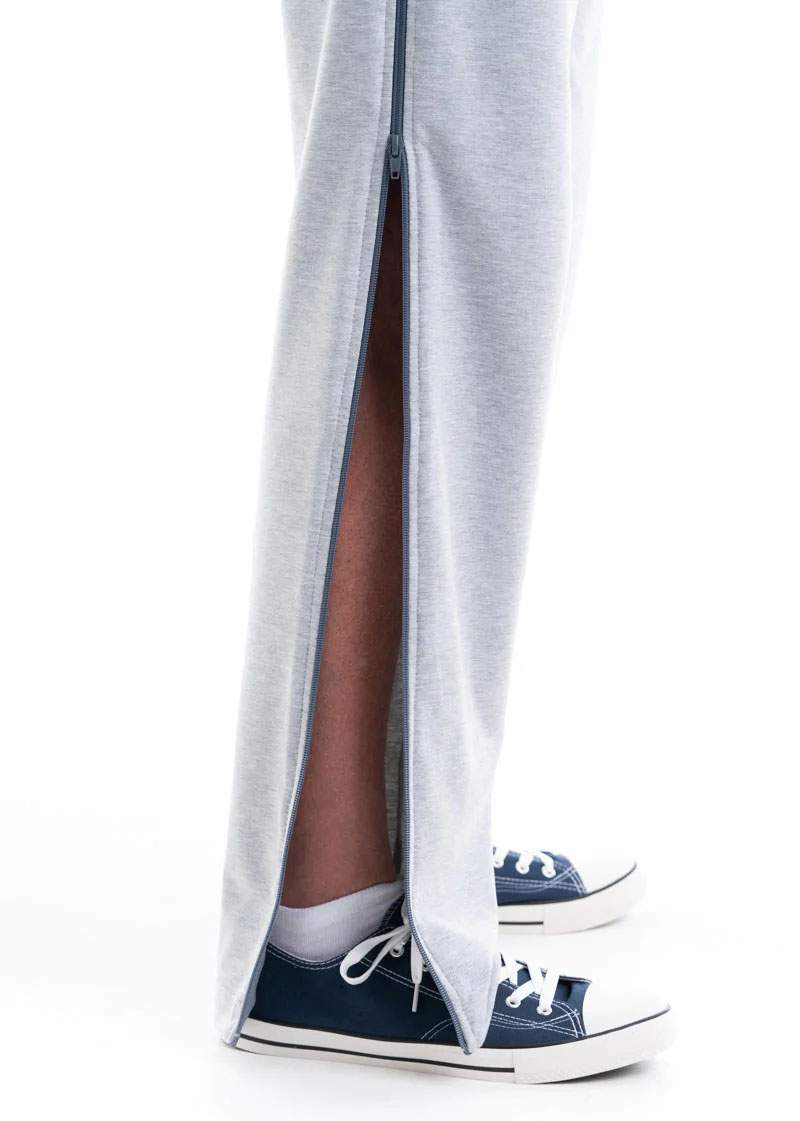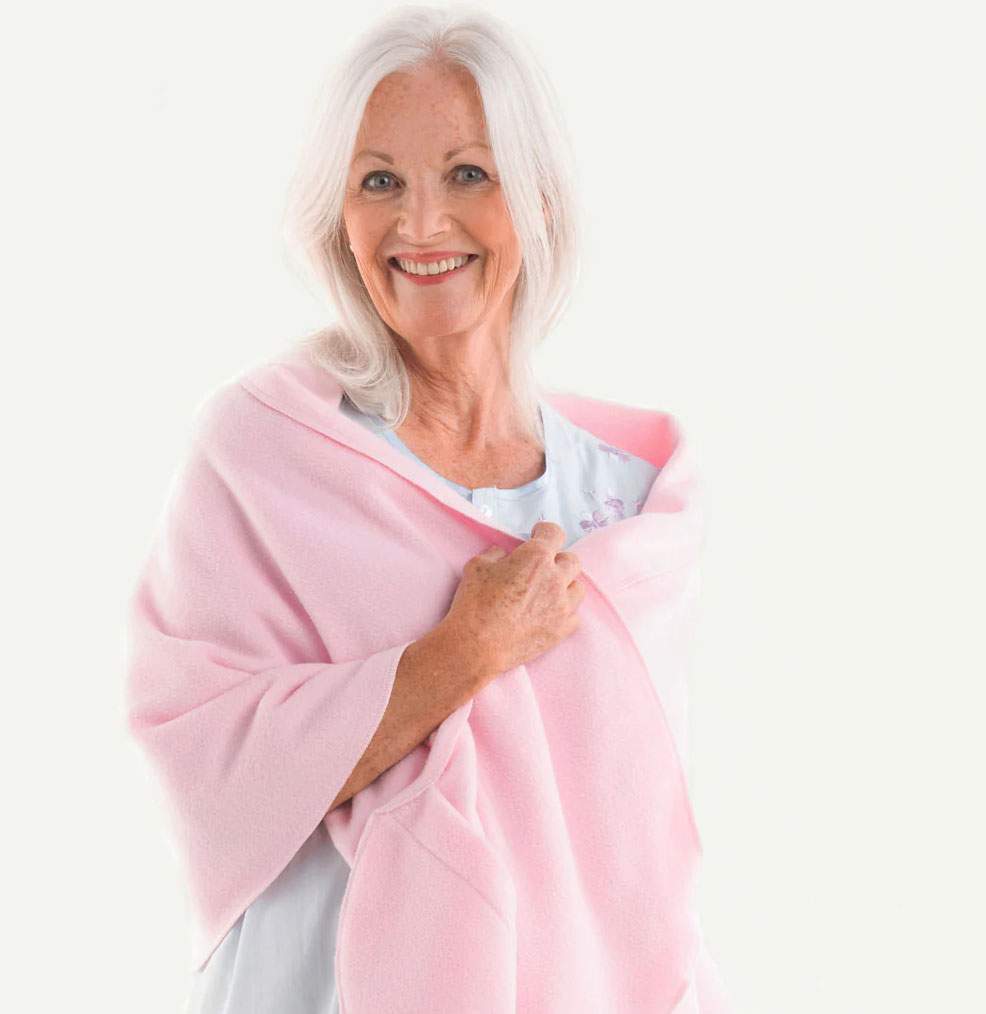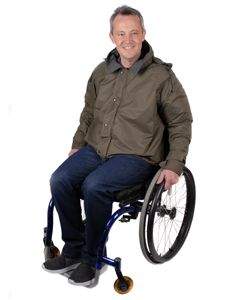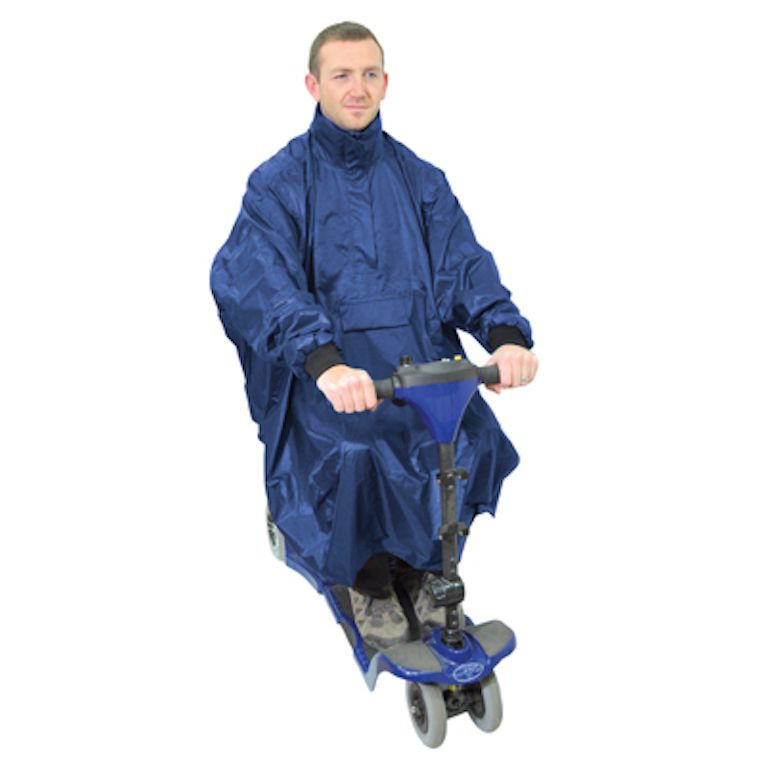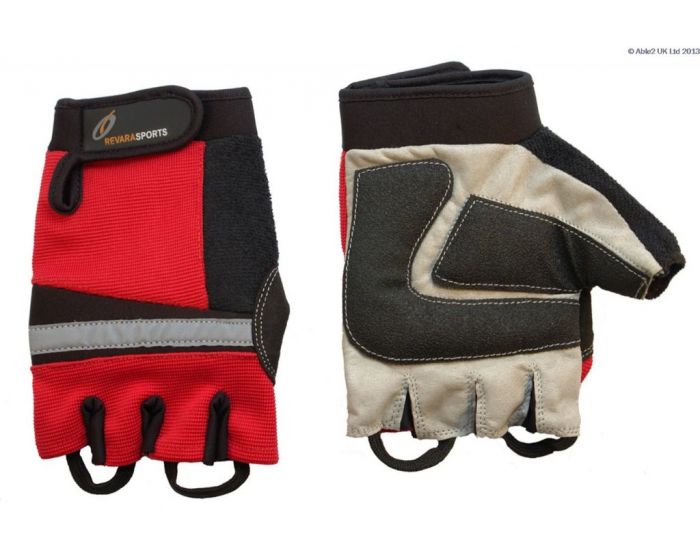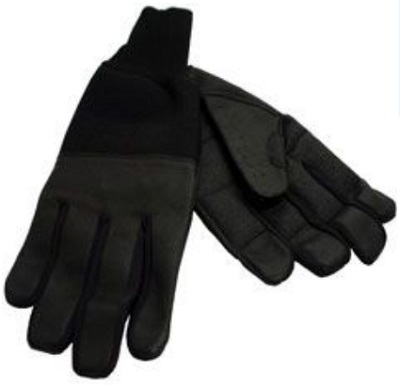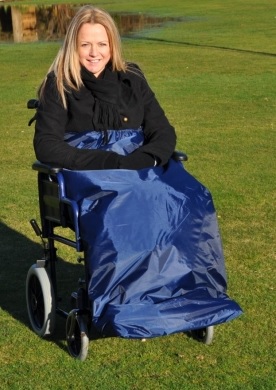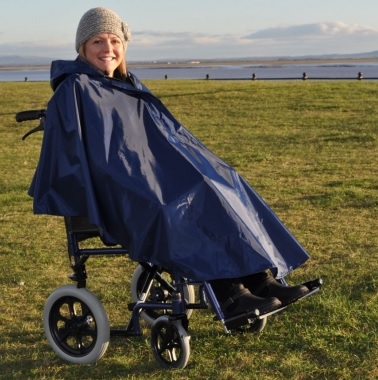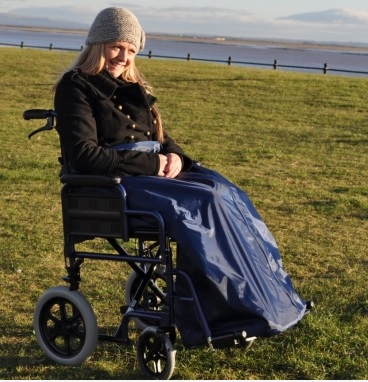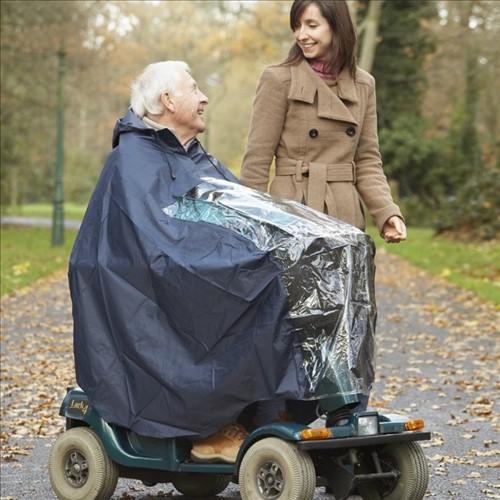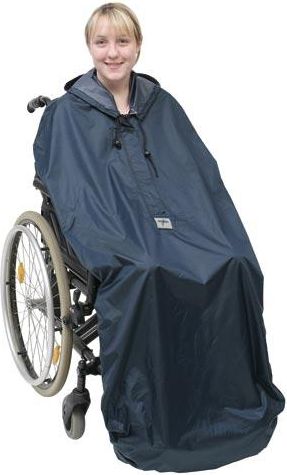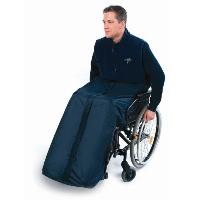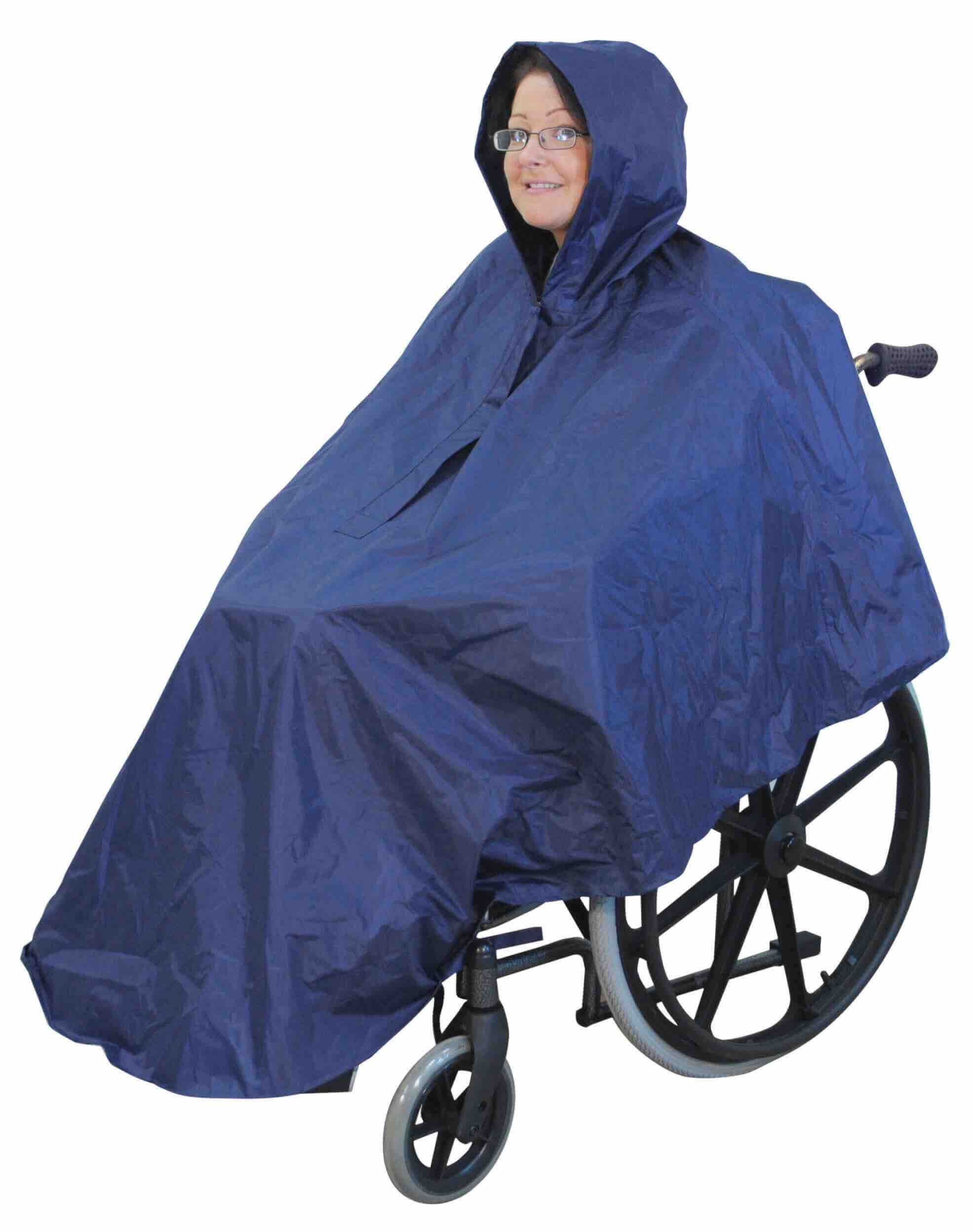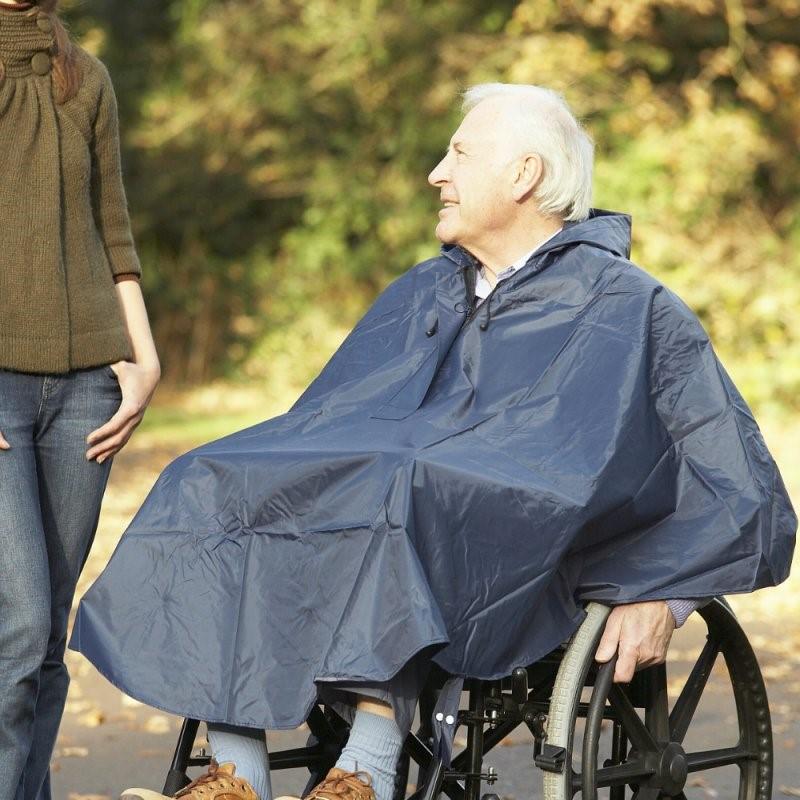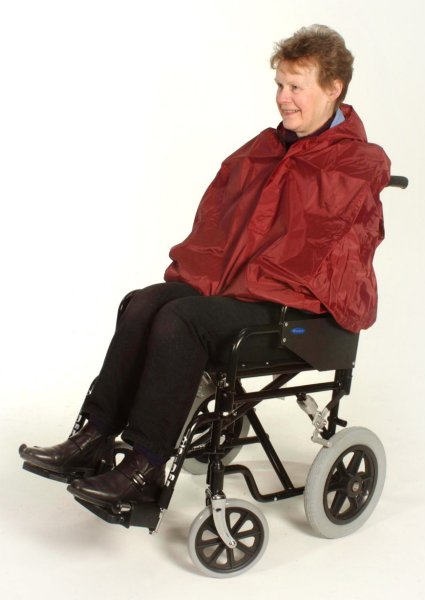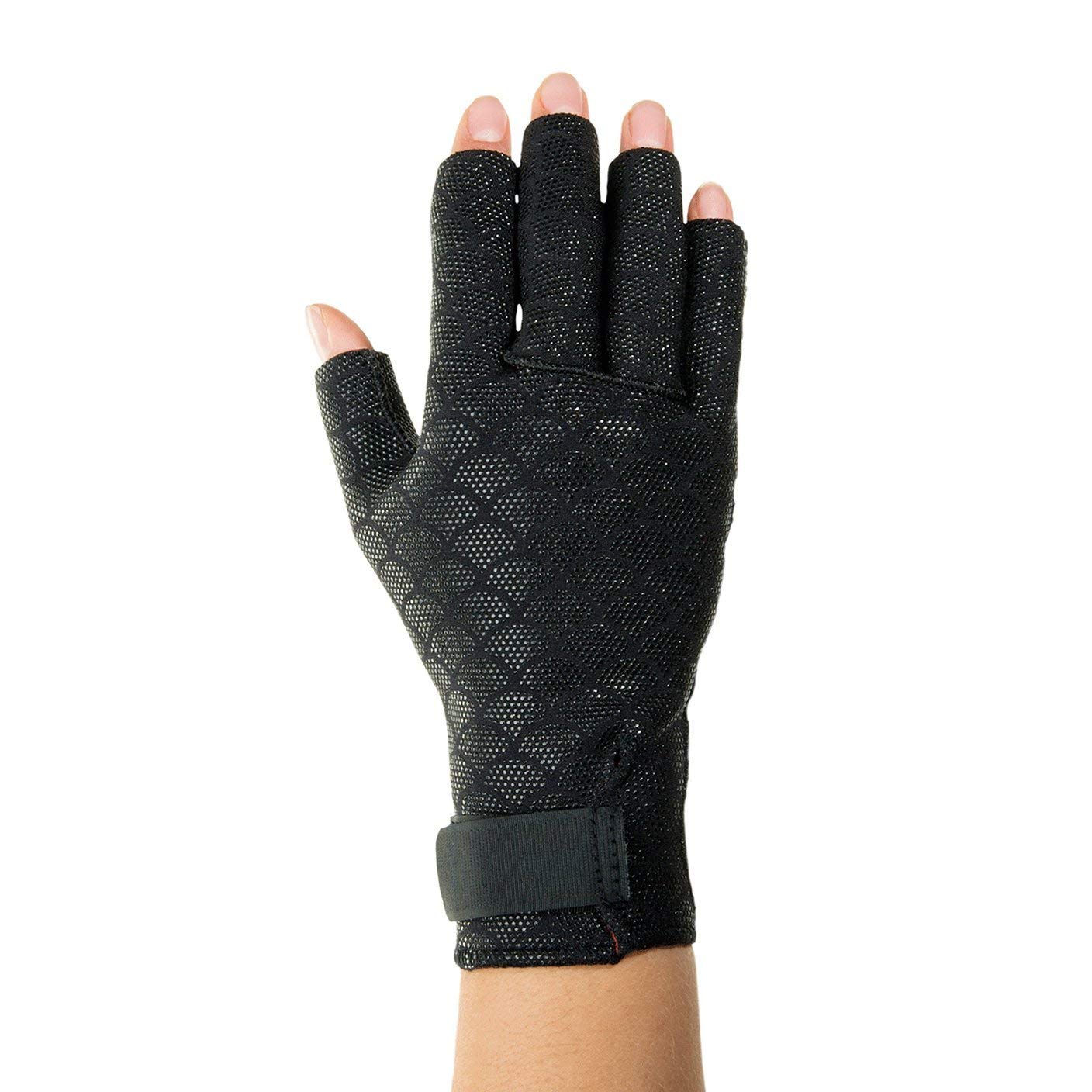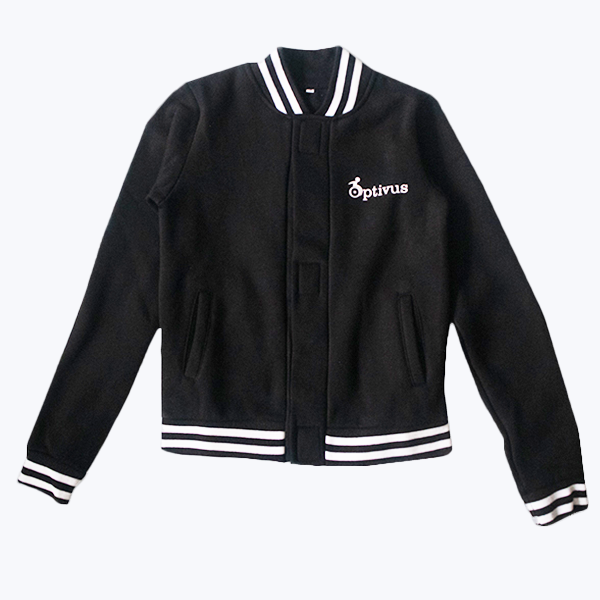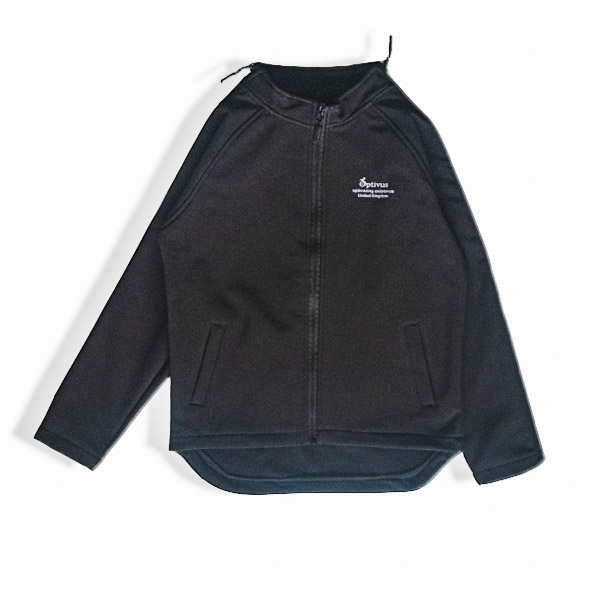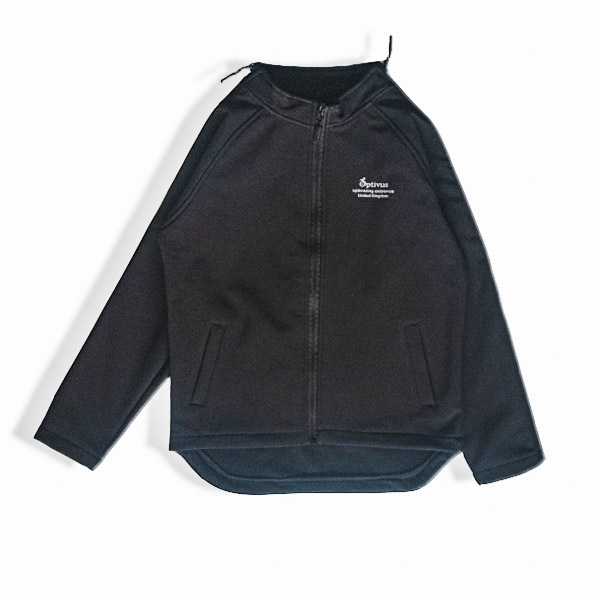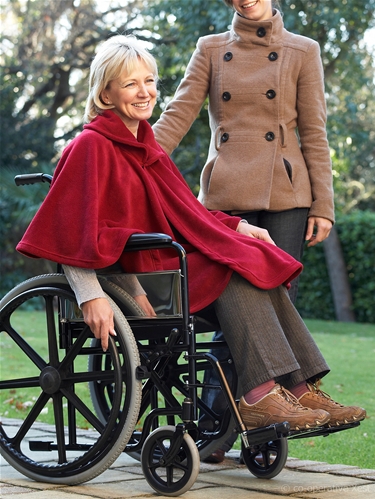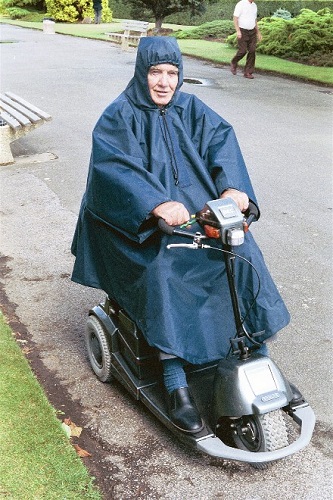Outerwear
This section includes men's, women's and children's outerwear with assistive features that may make the garment easier to put on or take off. Also included is outerwear for warmth or protection, outerwear for people with sensitive skin, and outerwear available in larger sizes. Some clothing may be made-to-measure, some is suitable for wheelchair users.
Outerwear in this section includes: gloves and mittens, jackets and coats, shawls and ponchos, protective headwear and clothing, outerwear for wheelchair users.
Assistive features include:
- Padding to reduce the risk of injury
- Coverings that protect hands and arms when propelling a wheelchair, or from the elements
- Enhanced grip that may assist a wheelchair user to propel
- Velcro, press-studs, zips, magnetised or button-through fastenings may be easier to use than standard fastenings
- Side openings may assist a person to dress themselves
- Higher or shorter cut clothing may be suitable for wheelchair users
- Materials that are suitable for certain skin types, such as sensitive skin, may increase comfort
- Materials to provide extra warmth, including battery-operated heated clothing
- Waterproof or showerproof material to protect from the elements
- Larger clothing sizes.
Introduction
Everyone wants to be able to choose and wear clothes that are comfortable and to their own personal taste. This can be difficult for you if your mobility, grip, balance or sensations have been altered through a condition, illness or injury.
There are companies which specialise in manufacturing clothes to meet particular needs, and some high street brands are now including clothing designed for people with additional requirements. Some clothes and footwear can be adapted to help. You may find certain types of fabric and styles of clothes or footwear can be useful in overcoming problems. Equipment and techniques for dressing and undressing can also be utilised to enable ease and independence in self-care.
Clothing styles and fabrics to make dressing easier
If you find dressing difficult, there are a number of things you can try to remain independent with dressing.
- Look for styles with large fittings, such as big buttons and chunky belts that are easier to manipulate.
- Skirts and trousers with elasticated waistbands are often easier to manage than those with fasteners such as buttons or zips
- Loose fitting, stretchy clothing without fastenings, such as T-shirts, will often be easier to manage and eliminates the need to fasten buttons or zips
- If choosing clothing with fasteners, make sure the fastener is easily accessible, at the front for example
- Clothes that open at the back are usually easier to put on if seated, however fastenings may be difficult to access
- Wrap-around tops, cardigans and skirts may be easier, although you may need to be able to secure them at the waist. You may be able to adapt a belt by using hook and loop fastener, such as Velcro, or a large popper or magnetic button
- Capes and ponchos can be easier to put on than a heavy jacket or coat, especially if you have restricted shoulder movement.
Look for fabrics made from the following:
- Clothes made from knitted or 'jersey' fabrics are often easier to manage than more stiff, woven fabrics. A small percentage of elastane or Lycra also makes fabric more stretchy, and can help it regain its shape after being stretched. However, if you have sensitive skin, you may wish to avoid synthetic fabrics
- Smooth, slippery fabrics are usually easier to get on and off, as they glide easily over your skin or other layers of clothing
- Easy care fabrics are usually easy to wash and need little or no ironing, so are often a good choice
- If you are someone who tends to get hot and sweaty, try lightweight natural fabrics such as cotton, linen or a mix; ‘breathable’ fabrics; or those that are designed to ‘wick’ any dampness away from your body
- If you are someone who gets cold, choose fabrics which hold tiny air pockets in their weave, such as wool, flannel, fleece. Use multiple layers to trap the warmth.
Adapting your clothing
It is possible to make adaptations to your existing clothes. Listed here are some suggestions on how some difficulties can be overcome by relatively simple adaptations.
- Drawstring belts on pyjamas, trousers and skirts can be difficult to tie. Remove the drawstring at the waist and replace with elastic
- Magnetic, or hook and loop fasteners (such as Velcro), are usually the easiest to manage. Shirts, trousers, bras and skirts are available ready made with these types of fastenings, or it is possible to adapt your own clothing. For example, Velcro dots can be used instead of buttons to fasten a shirt
- Bras can be difficult to fasten at the back, and hook and eye fastenings can be difficult to manage. Front fastening bras are available, and are usually easier to manage. If you have the upper limb and shoulder mobility, you could also consider a fasten-free bra, which is pulled on over your head or up from the floor. You may prefer to try a pull-on vest-top with built-in support
- Zip fastenings can be quicker and easier than buttons, although open ended zips can be difficult to align and fasten if you have pain or stiffness in your fingers. Extended tabs or loops can be added to zip tags to make them easier to grip and fasten
- If you have difficulty managing or holding layers of clothing when you go to the toilet, consider alternative ways of temporarily securing your clothes. There is equipment for this (for example a Pants aid) but you may find it easier to sew discrete loops and buttons to hold layers out of the way
- Discrete zips can be added to the side seams of trousers, either from the top or the bottom, or all the way down, making their removal easier, or providing access to a catheter bag.
Dressing techniques
There are a range of dressing techniques that can be used depending on what difficulties you have with dressing. For example, there are one-handed dressing techniques for tying shoelaces, putting on a bra, shirt, jacket, sweatshirt, socks and for tying a tie. There are also techniques for dressing if you have limited strength in your hands, limited shoulder movement or paralysis.
These dressing techniques can be demonstrated by an occupational therapist, who can do an assessment with you and show you appropriate dressing techniques to suit your abilities.
You may also be able to get advice on dressing techniques by visiting an Independent Living Centre. There are several of these around the country where you can go for impartial advice.
Dressing equipment
Dressing aids are relatively simple to use and can assist with a variety of dressing tasks. We recommend that you seek advice from an occupational therapist before buying equipment, or try them out at your local Equipment Demonstration or Independent Living Centre. For some of these items, practice and correct technique is needed to ensure you can use them effectively.
Button hooks
A button hook usually consists of a thick handle and a wire loop. The loop is threaded through the buttonhole, hooked over the button, and the button pulled back through the hole. Button hooks usually need a lot of practice to use effectively, especially if you have the use of one hand only.
Dressing sticks
A dressing stick usually consists of a long wooden or plastic handle, with a hook on one end and sometimes a thimble or smaller hook on the other. You can use a dressing stick to bring clothes around your shoulders, push clothes off your shoulders, pull up zips (using the small hook end), tighten shoelaces, pull up trousers or straps or push off socks.

You can also sew loops onto clothing and then use the dressing stick to help with positioning the garment.
A dressing stick is useful if you have limited shoulder movement, but requires a reasonable grip. Padded sticks are available if you have very delicate skin, which also helps with gripping the stick.
Some people who use a walking stick can become very adept at using their stick as a dressing aid.
The following can help you when putting on underwear:
- A bra angel is a plastic bracket that slips around your neck, and allows you to keep one side of a front-fastening bra in place while you use the fasteners on the other side with one hand.
- A pants aid is a wire frame over which pants or a slip petticoat is fitted. The feet are put through the frame and leg holes of pants and the underwear pulled up to the knees from where they can be reached by hand.
Reachers or pick-up sticks
Reachers/pick-up sticks are available in various lengths and grip styles, and have a pincer grip at one end. They may be used to pick clothes up from the floor, pull up

underwear or trousers and push down socks, underwear or trousers. Some have a shaped pincer end which doubles as a shoe horn.
You need to be able to span the grip handle and have reasonable grip/squeeze strength in order to use this piece of equipment. You also need good arm control in order to manoeuvre the length of the pick-up stick accurately enough to be useful.
Clip and Pull is canvas strap and clip device is designed to help someone to pull trousers up with use of one hand only.
Pants and trouser clips
This consists of two plastic clips joined with a piece of elastic. One clip is attached to your top, the other to your trousers before you lower trousers to go to the toilet. This helps keep trousers within reach when you stand after using the toilet.
Sleeve aid
This is a split conical tube which fits over the hand and forearm, protecting frail joints or post-op skin when putting on a long sleeve.
Long-handled shoe horn
Long-handled shoe horns can help with putting on and taking off shoes. They can also be used to help push socks off the lower leg.
As many have a hook on the alternative end, they can also be used for reaching items of clothing, such as pants and trousers.
Boot jack
This is a traditional way of getting boots off and can be very useful if bending is difficult. The heel of the boot is held in the jack whilst the foot is pulled up and out.
Zip aids or zip puller
A zip aid is usually a piece of cord or fine chain with a hook on one end and a tab at the other to assist with doing up zips. Large rings or tape can also be attached to a zip tab to help make gripping easier.
Sock, stocking and compression stocking aids
Sock and stocking aids may help if you have difficulty bending forwards to put on socks, stockings, tights and compression stockings. There are a variety of flexible and rigid styles. Most require a degree of grip strength and dexterity. An occupational therapist would be able to advise you on which one is most suitable for you. There are also stocking aids specifically designed for putting on compression stockings.
Flexible stocking/sock aid
The flexible version is cone shaped and made of plastic, fabric-covered plastic or just fabric. It has two tapes/ribbons at the top. It is sometimes called a gutter sock aid.

With the aid held on the knee, the sock is gathered onto the aid which keep the sock open along its whole length. The aid is then lowered onto the floor, whilst holding on to the tapes. The toes of the foot are placed into the open end of the sock and the ribbons pulled to pull the sock up the lower leg. The fabric, or fabric-covered type, are recommended to anyone who has delicate skin.
A double version of this aid can be used for tights. These are rather tricky to manipulate and require a lot of practice especially if there is a high lycra content in the tights. People with poor grip or shoulder function may find pulling the tights up over the hip difficult. Pulling up with hands crossed over the body reduces the amount of shoulder movement required.
Rigid stocking/sock aid
The rigid version consists of a plastic semi-circle which pivots on the end of a long handle. As with the flexible sock aid, the sock is fed onto the aid which keeps it open. The toes of the foot are then placed into the open end of the sock and the aid used to pull the sock up the lower leg.
Sock aid frames
These are rigid wire frames which hold the sock open whilst the foot is placed into the sock. The frames usually has handles at the side which are used to pull the frame and thereby the sock up the leg.
Compression stockings
The sock aid frames are usable with compression stockings. Hand strength is required to load the stocking on to the frame. If you wear the toeless stockings, you can get a stocking slider, which is made from slide sheet fabric which helps to slide the stocking on smoothly past the toes and heel.
There are also some slide sheet fabric aids designed for enclosed toe stockings. Be aware that when using the slide sheet stocking gadget you need to be able to reach down to your feet. These gadgets may help a carer to assist with dressing if the wearer’s skin is delicate.
Clothing for people with sensitive skin
Skin problems can be caused by conditions such as:
- eczema or psoriasis
- poor circulation
- reduced sensation
- allergies to certain chemicals, dyes or perfumes.
Choosing the right fabric
Skin allergy, also called 'contact dermatitis', is one of the most common skin diseases. An allergic reaction is a hypersensitivity disorder of the immune system. Allergy occurs when a person’s immune system reacts to normally harmless substances in the environment.
Numerous chemicals are used in textile production and some of these chemicals can cause allergic reactions. The source of allergy to textiles can be the fabric itself and chemical additives used in processing the fabric. The most frequent allergens are textile dyes which are causes of acute dermatitis with rapid onset.
Some chemicals used in textile manufacture wash out, some remain within the fabric. You are advised to wash new clothes before wearing them and where possible select clothes which are made of undyed, natural fabric.

The National Eczema Society (NES) suggest that many people with eczema find cotton clothing preferable, as it allows the skin to breathe and prevents overheating. Many also find silk, linen or soft acrylic to be comfortable against their skin.
The NES also advise people with eczema to avoid cheaper products which can cause problems as they may have been finished with an irritant chemical called formaldehyde, which can trigger a flare-up in some people. Also to be wary of 100% cotton that can only be washed at low temperatures, as this may have also been coated with a chemical finish.
Lycra is widely used in socks, stockings and tights and may cause problems for some people with sensitive skin. Look for alternatives made with more natural products.
Fabrics that are stretchy and 'give' when you move are often more comfortable than stiffer fabrics, especially if you sit for long periods. The weight of a fabric can also be important to consider, especially if you experience pain when moving or if you have limited strength or endurance. Wearing a few lighter weight garments is likely to be warmer and more comfortable than a heavy coat for example.
Styles of clothing
It is likely that you will find loose fitting clothing more comfortable if you have skin problems.
Try to avoid creases and folds in fabric as they can increase the risk of skin breakdown, especially if you are sitting for long periods, or if you perspire a lot. Excess perspiration can cause skin irritation.
In warmer weather, looser fitting clothes allow air to circulate near the skin and remove moisture and heat. Rigid or rough seams, large fasteners and pockets which create uneven surfaces should be avoided. Washing labels can be cut out of clothing if they cause irritation.
Hosiery for people with circulation problems
Certain conditions like diabetes or Raynaud’s can cause circulation problems, especially to the hands, lower legs and feet. It them becomes important to protect your hands and feet from cold and possible damage which you may not feel. Further information on footwear is available from our factsheet on Choosing footwear and dressing
equipment, but some general advice is here.
Consider wearing two pairs of socks, one thick and one thin or socks over stockings. These must fit properly within the shoes - they shouldn't be too loose nor too tight.
Diabetes UK recommend that you avoid socks, stockings or tights with wrinkles or prominent seams. Garters and stockings or socks with elastic tops should also be avoided because they may restrict the circulation. Never wear socks with darned areas or holes.
Mountaineering or walking socks (available from sports shops) are often warmer than traditional socks. Slipper socks have extra grip soles, cover the foot and reach the calf. They are worn instead of slippers and shoes but are not as supportive. They are safer and warmer than ordinary hosiery worn without shoes, but may prove difficult to remove.
Hosiery is available in a wide range of material and in different weights. Man-made fibres feel warmer when they have a brushed or terry finish. The thicker the fibre the warmer it is, particularly when knitted. Wool is a good insulator but needs washing carefully and replaced when the fibres become matted. Silk is also known for its warmth when layered and silk socks are available from outdoor pursuit suppliers.
Clothing for wheelchair users
If you use a wheelchair, you may find that some standard clothes are not practical or comfortable to wear for long periods of time. There are clothes designed for wheelchair users commercially available and it is possible to adapt your preferred clothes if you so choose.
If you have reduced, or no sensation in your lower body, and you are immobile in the chair much of the time, you must be aware of how the clothing you wear affects your skin condition.
Some general guidelines on choosing clothes are:
- A sitting position will cause clothes to ride up, so look for trousers with a longer leg length, or longer dresses/skirts
- Jackets which finish just below the waist are easier than a full length coat
- Be careful how the clothes are going to drape, especially with thick or heavy material, so that you are not left with bulky ‘pools’ of material
- Depending on your upper body mobility, you may find clothes which pull over the head, or fasten at the front, easier to manage
- Underwear which fastens at the crotch can help make toileting easier
- Avoid tight clothes or material with no ‘give’ which might restrict blood circulation
- Choose clothes with a looser fit so that they are not tight around knees, thighs and hips
- Tops with a looser fit across the shoulders and upper arms will be more comfortable if you self-propel
- Clothes with slippery linings will generally be easier to put on and take off
- Avoid seams, pockets, creases etc which might cause skin breakdown. Soft, flat seams will be more comfortable
- Stretch fabrics are generally more comfortable to sit in and often make it easier to dress
- Natural fibres are often most comfortable, are breathable and are best at maintaining body temperature.
Adapting existing clothing for wheelchair use
It is often possible to adapt ready-made clothes from the high street so that they are more comfortable or practical to wear whilst using a wheelchair. You, a friend or family member may be able to make the alterations, or a local dressmaker or dry cleaner may be able to do the alterations for you.
Look at adapting the shape if necessary. Also keep fastenings within reach and use less fiddly designs, e.g. magnetic clasps or buttons.
Jackets
- Enlarging the underarm of a jacket can help make dressing quicker and easier. This can be done by opening the seams at the arm hole and sewing a gusset into the opening
- If you have a long jacket (or coat), shortening the back of it can help prevent you from sitting on the hem, and from the garment from bunching up around your waist and hips when seated. This can be done by opening up the side seams to waist level, cutting the fabric to the required length and then hemming at the new level
- Opening up the side seams to about waist level can also help prevent a jacket from bunching and creasing.
Trousers
- Lengthening the waist at the back will help make trousers more comfortable while sitting, as well as help avoid gaps between trousers and tops. Do this by unpicking the waistband and attaching an extra piece of fabric then replacing the waistband
- Shortening the waist at the front will also make trousers more comfortable while sitting. This is done by unpicking the waistband, removing the zip and cutting away the excess fabric, then sewing the waistband on again. Lengthening the fly opening using spare fabric will also help make dressing easier. Depending on the looseness of the clothing, you may choose to replace any trouser fastenings with elastic in the waistband
- Removing excess fabric and darting trousers behind the knee can help make them more comfortable to wear if sitting for long periods of time.
Buying ready-made adapted clothing and specialist wheelchair clothing and equipment
There is a growing range of clothing available from specialist suppliers that has been specifically designed to be more practical or comfortable for wheelchair users. There are also items of specialised equipment if you have particular requirements, such as keeping warm.
There is also a range of items designed for wheelchair users such as long waterproof macs and ponchos and zipped sitting bags to keep your legs warm and protected from wet or windy weather.
Managing clothing when using the toilet
How you manage toileting is very personal and different for everyone. Most people want to be as independent as possible, minimising the risks of ‘accidents’ at any time.
Whatever your difficulty, you will need clothes that are easiest for you to manage when you want to use the toilet. Consider how you personally use and transfer on and off a toilet.
For example, although a man may usually stand to urinate, if you are unstable, you may find that sitting is a safer, easier option. It also means that you do not need to worry about holding items of clothing whilst using the toilet.
When considering how you use and transfer on/off the toilet, what items of clothing will you need to move or remove? Do you find it easier to pull pants up/down or would you find it easier to have pants which fasten under the crotch? How you choose to manage will depend upon your personal condition and abilities.
You are advised to look at each stage and movement involved in the task of toileting, working out how best you will manage your clothing. Consider both day- and night-time scenarios; many people are sleepy and less stable at night, so may need the simplest of clothing options.
If you experience incontinence and wear pads, you will need clothing which is discrete, which keeps pads in place and allows you to change pads easily when required. If you wear a catheter, please see the section below.
‘Tricks of the trade’ can be tried, although they are not useful for everyone. The following clothing suggestions may help:
- Select slightly larger sized, or loose-fitting clothes to allow easier movement, or if you require more space for incontinence pads or a catheter
- Select clothes with easy or no fastenings
- Choose styles which make it easy to move clothing out of the way, for example elasticated waistbands on trousers, or a wrap around skirts
- If you need fastenings, use poppers or hook and loop velcro-style fastenings to make them easier to manage, either independently or with assistance from a carer
- Using dots of velcro tends to be easier than two strips of velcro particularly for fly openings on trousers or waistbands of women's skirts (Pain, McLellan, and Gore, 2003)
- Try using a clothes peg to hold clothing such as a shirt out of the way when using the toilet, or tucking a skirt into an elasticated waistband to keep material out of the way
- If you find it difficult to reach clothes once they are lowered, fit long loops of tape inside the waistband. Keep the loop around your wrist when you are seated on the toilet. When you need to pull the pants/trousers up, you can use the loop. There are also dressing aids, such as trouser clips, which might help
- Select open-backed nightwear
- Underwear with side, crotch or back fastenings which allows access for example to catheters and urinals, and facilitates changing an incontinence pad. Many of these styles eliminate the need to pull pants down and so may make toileting easier for if you are a wheelchair and/or hoist user.
Clothing for people with a urinary drainage catheter bag
Most people do not want it to be obvious that they are wearing a catheter bag. The factors to consider are ease of access and the desire to hide any possible bulging as the bag fills. You also need to be careful that your clothes do not constrict the flow of urine in the drainage tube, perhaps when you sit down.
Catheter bags are commonly secured to the side of the leg at calf height for ease of access, though some people choose to wear them higher up the leg. You can change where you site the bag according to what you want to wear, so long as you have the right catheter accessories.
If you wear your bag attached to your calf, you should look for loose fitting trousers which you can easily pull up and out of the way when you need to attend to the bag.
If you are a wheelchair user, you may also need to consider wearing longer trousers, so that they do not expose the bag when you are seated. If you prefer, trousers can be adapted with a zip fastener or hook and loop Velcro-type fastener inserted into the lower half of the side seam.
If you choose to wear your bag above the knee, as a man you can open your trousers at the top, reach down inside your trousers to pull the bag up and out to empty it. As a woman, you can wear skirts and dresses long enough to hide the bag.
Clothing for people with a stoma
It may be necessary to manage your stoma several times a day. You may choose to wear non-specialist clothing which is better suited to your personal needs, such as clothing that is looser around the level of your stoma, or you can explore specially designed clothing for stoma wearers.
People who are new to stoma wearing may be a little self-conscious. You might like to try wearing some bright patterned tops which distract the onlooker from your abdomen.
Front fastening clothes will make stoma care easier and clothes with room for movement and room for a slightly fuller stoma bag might be comfier. Very tight jeans might be uncomfortable.
The Colostomy Association has some links to specialist clothing providers on their website.
Understanding your needs
It is important for you to fully understand your condition and its implications for you and possibly your carer. The more information you hold about your personal circumstances and what works for you, the more confident you will be in seeking out or asking for suitable clothing and adapting them if necessary.
Similarly, if you have a condition which limits your physical ability to get dressed and undressed, knowing your abilities and strengths and gaining some ‘tricks of the trade’ can make the tasks easier, perhaps with the help of some simple equipment.
An occupational therapist can assess your needs and help you to find a way to manage and overcome any clothing or dressing difficulties you may be experiencing.
Supply and provision
Clothing is not usually supplied by statutory services. However, if the particular clothes you require are costly, you may want to apply for alternative charitable funding. Speak to an appropriate professional first to clarify what you need, as most applications require the support of a qualified health or medical professional.
There are a number of charities who offer grants for adults and children, more information on these can be found below.
Clothing for children
If you have a child with special needs who is expected to wear school uniform, find out how rigid the requirements are. If there is a particular style, you may need to adapt the clothes to make them easier to put on/take off. If the uniform styles can vary, certain shops have easy-to-wear basic items.
Some local education authorities give help with the cost of school clothing for pupils in maintained schools, colleges for further education and sixth form colleges. This can include uniform and non-uniform clothes, shoes and sports kit. In some schools and colleges, help may be available from the governing body or parents’ association. The availability of grant support varies across the country. You are advised to contact your local education authority or Citizens Advice bureau.
VAT relief
If you are terminally ill, or chronically sick or disabled, you will be eligible for VAT Relief on the clothes that you buy or which are bought for you. Your illness or condition can be either physical or mental, but must be considered as either terminal or chronic by your doctor. It would include conditions such as as Alzheimer’s, diabetes and arthritis.
A frail, older person who is otherwise able-bodied, or any person who is only temporarily disabled, would not qualify.
Funding sources
Children
Before you seek charitable funding (or buy) equipment for your child, we would advise you to seek specialist advice. This will help you plan for both immediate and long term needs, will increase awareness of the alternatives on the market, and to check whether the equipment you need can be provided by the statutory services (if this hasn't already been investigated).
The Directory for Social Change (DSC)
The DSC is an organisation which aims to support charities. They have an service which charities or other bodies can subscribe to find and access grant monies.
Disability Grants
Disability Grants offers help in finding grants.
Family Fund
Family Fund provides grants for families raising disabled or seriously ill children and young people aged 0-18. They provide grants for a wide range of items, including clothing.
Margaret’s
Grants specifically for women. Applications must be made through a professional.
Masis
Grants and financial support advice.
Turn 2 Us
A national charity that helps people in financial hardship gain access to welfare benefits, charitable grants and support services
